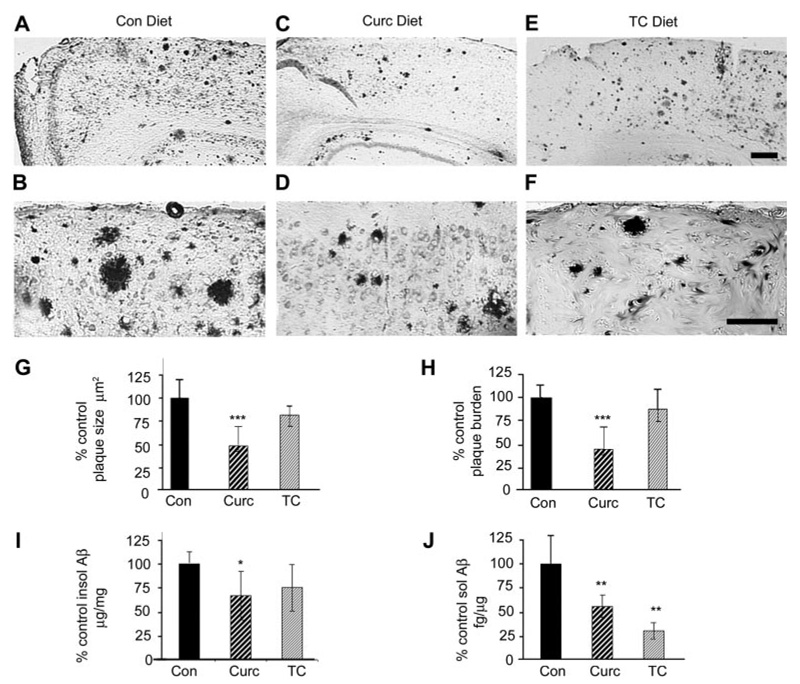Fig. 7.
Dietary curcumin seems more effective than TC in reducing plaque pathology in the Tg2576 APPsw mouse, but both reduce soluble Aβ levels. Curcumin or TC was administered to aged Tg2576 mice for 4 months (12–16 months old) in the chow (500 ppm) during accelerated plaque deposition. Representative micrographs stained with antibodies to Aβ (DAE; anti-Aβ1-13). Compared with Tg+ mice on control diet (A and B), mice on curcumin diet showed a noticeable reduction in plaque size and number (C and D). However, sections from mice on dietary TC (E and F) showed plaque distribution similar to those from mice on control diet. Although image analysis quantification confirmed that dietary curcumin could reduce plaque size (G) and plaque burden (H), dietary TC seemed to have no impact on plaque pathology. I, insoluble (guanidine-insoluble) and soluble Aβ (TBS-soluble) in cortical homogenates were also evaluated by Aβ sandwich ELISA. Curcumin, but not TC, reduced Aβ levels in detergent-insoluble fraction. J, in contrast, both drugs suppressed soluble Aβ levels (in TBS-extracted brain homogenates), with a trend for TC being more potent. Magnification bar, 75 µm. Statistical analysis of Western data were performed by one-way ANOVA and immunohistochemistry data by 2 × 2 ANOVA (treatment × brain region), and values shown are the mean ± S.D. *, p < 0.05; **, p < 0.01; and ***, p < 0.001 represent significant difference of control (n = 5) and standard diet (n = 5) compared with curcumin (n = 9) and TC (n = 7) treatment of Tg+ mice, respectively.

